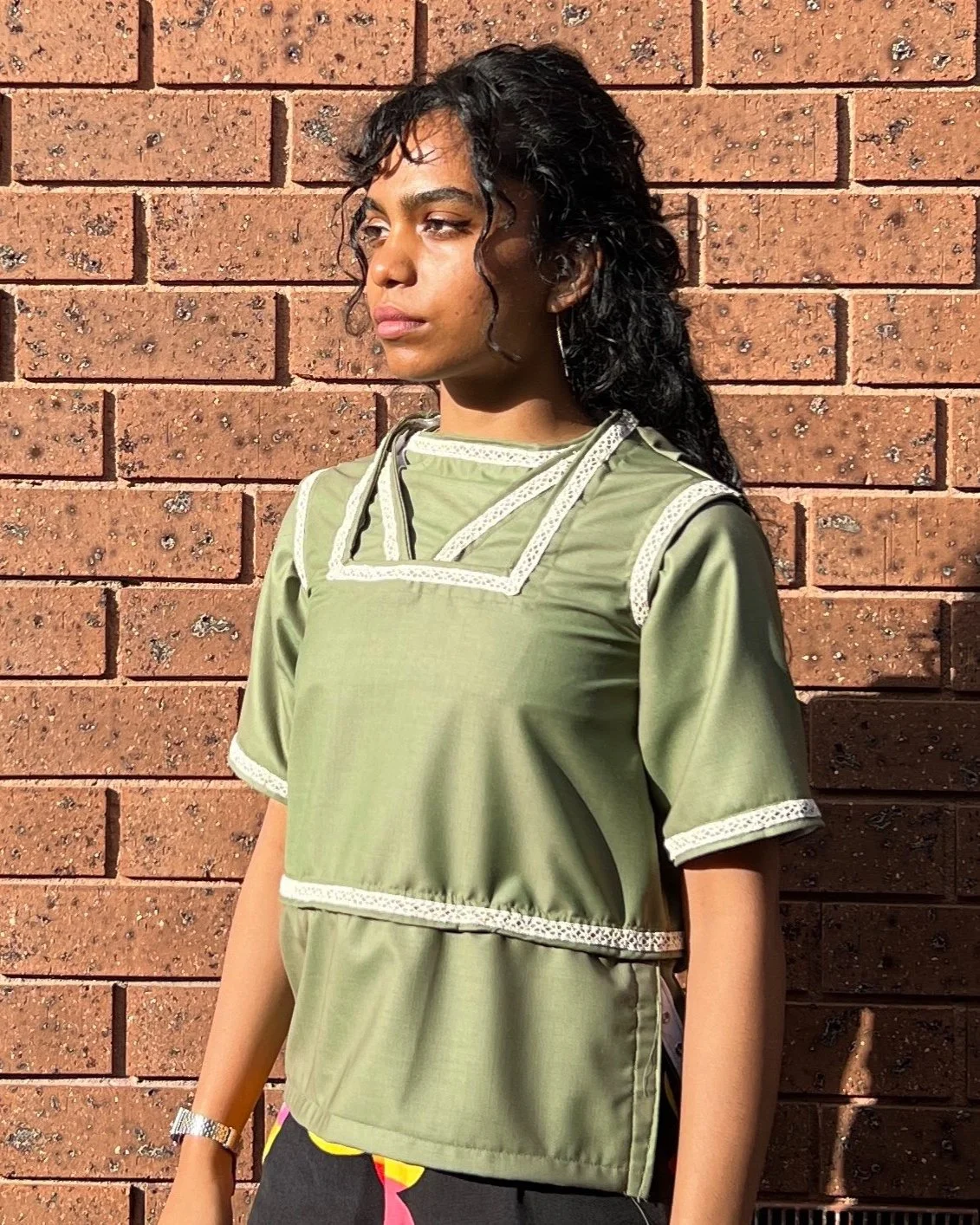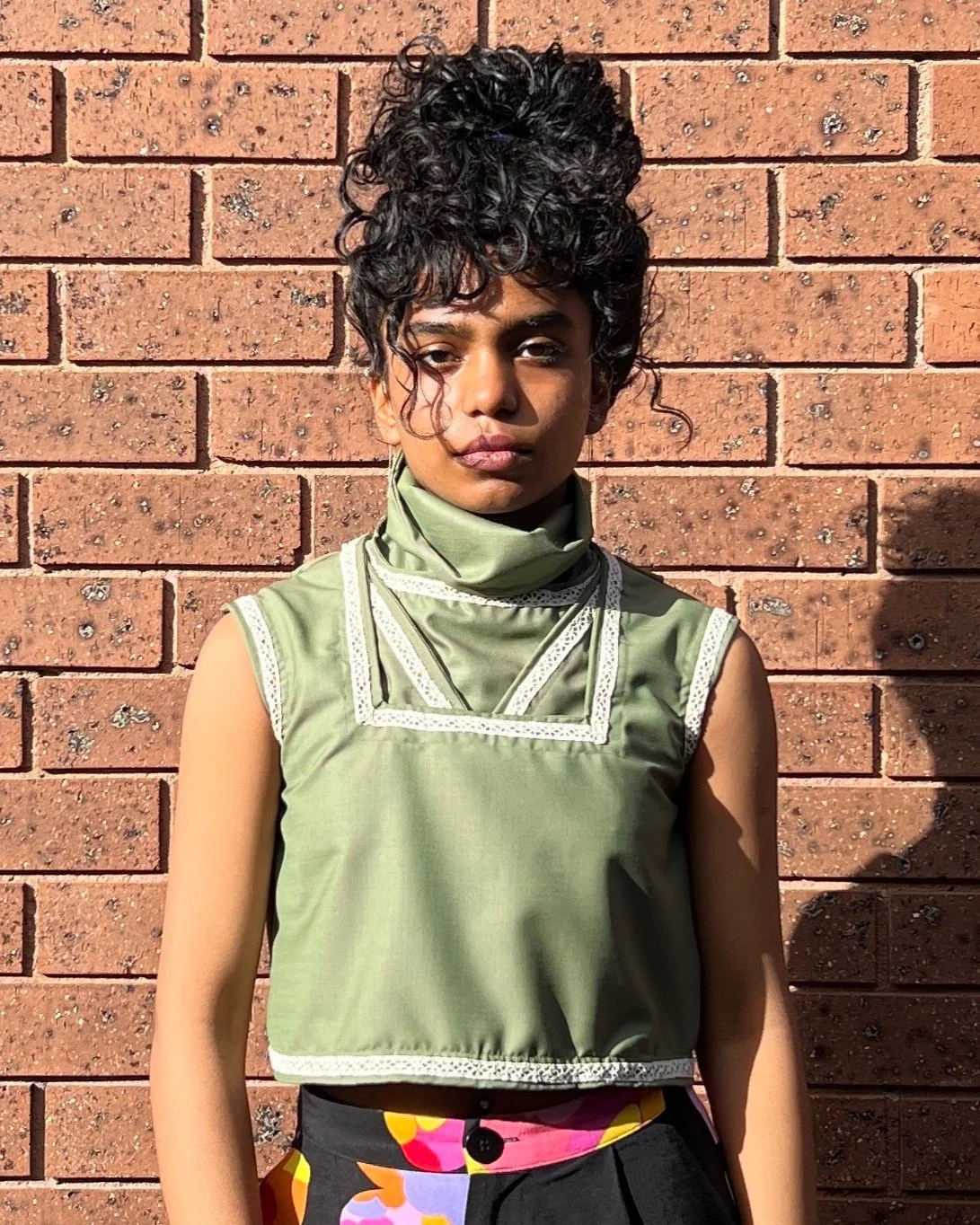Snappy-Go-Lucky!
Introducing 22+ styles all in one called Snappy-go-lucky. This design shows how a modular design and repairable merino wool outfit can foster emotional attachment and influence minimalist women's consumption patterns. The fully modular costume enables wearers to change 2 above and 3 below-neckline options, 3 sleeve lengths, and 2 shirt lengths for different seasons. Flexibility boosts creativity, emotional resilience, and sustainable ownership in minimalist living. Seasonless, flexible fashion addresses fast fashion's wastefulness. Open development, iterative design, fitting, and survey feedback enlighten users and make garments practical. Lean manufacturing and circularity are promoted by this slow fashion alternative that reduces wardrobe overstock and meets fashion industry sustainability criteria. Mindful consumption and emotional connection with fewer, better garments are the goals.
Why Snappy-Go-Lucky?
This design should be introduced because it offers a timely and practical solution to today’s fashion and sustainability challenges. A fully modular, convertible outfit made from wool addresses the need for seasonless, versatile clothing that adapts to dynamic lifestyles while reducing wardrobe excess. Allowing wearers to customize tops (necklines and sleeve lengths), encourages creative self-expression, emotional durability, and mindful ownership. Wool, being natural, breathable, and thermoregulating, enhances the design’s year-round functionality while aligning with eco-conscious material choices. Through comprehensive portfolio documentation—including research, iterative sketches, fittings, and survey feedback—the design process remains transparent, user-informed, and grounded in real-world insights. Survey analysis deepens the understanding of public perception and needs, guiding future improvements and scalability. As a circular fashion model, this system supports slow consumption, lean manufacturing, and waste minimization, offering a sustainable alternative to mass-produced, short-lived garments.
The fashion industry demands a transformational switch to more environmentally friendly ways of making and buying clothes (Bardey et al., 2021). Fast fashion makes people buy too much, which leads to a lot of textile waste. Suggested by Van Elven (2018) that most consumers do not wear at least 50% of their wardrobe.
To study the outcome of the project, I wore the garment for a total of 30 days and washed it once a week. 8 people were interviewed in the context of Personal Values, Emotional Response, Social Adaptability, Design Feedback, Creative Potential, Care, Longevity, and Repairability
Draft 1
-
I began the pattern making process by cloning an existing shirt that fitted me well. Based on the advice my friends, who are good at stitching, gave me the idea of starting with the whole shirt patterns first, and then moving on to the necklines which made the process easier. After cloning my shirt pattern, I began cutting out the necklines, the V-neck, square neck, and round neck options and separated them into small plastic bags to feel more professional and organized. I then started working on the draft fabric and placed it on the Calico and began cutting out the patterns I made. This was my first huge sewing project that I chose to do, and in spite of knowing I'm not great at sewing, the things that made my life easy was using grid tracing paper to be exact with my measurements.
Draft 2
-
In my second draft, I used Velcro to help the pieces attach and detach. The measurements were very funny because I cloned the shirt, and I don't think I did a good job around the arms the width of the shirt was good, but the rest was not comfortable to wear. I also learned the concept of lining here. I didn't give lining in my first draft, but I realized that it's going to be important in my next draft. To also achieve stability in the pieces of the garment. I also realized that at this point my schedule was four to 12 am the previous day, and so was it the second day with my second draft.
This was because I knew I had taken off from work to complete this and be able to get back to work. So that pushed me to burn myself out a little bit.
I was happy with how the second draft turned out look-wise, but the measurements were going wrong again, and this time, I knew it was because of the shrinkage I didn't measure after I gave the lining on how much fabric I wanted to be seen, and how much needs to be covered around the velcro part of the shirt.
Draft 3
-
On my third day after the second draft experience, I was scared of how the project is going to be. At this point, I was still thinking that I want to go ahead and stitch the pant and skirt versions as well, but I was not able to get anywhere close to getting a good shirt. On my third day, I decided to start working on the final fabric itself and see where that takes me. The final fabric was very light and very silky, which demotivated me a lot more than the first two drafts. I was unable to work with the material, and it was scaring me to even cut the patterns out, but I still went ahead with it considering my correction mistakes from the previous drafts, and tried to push myself. I also made sure to keep up with my meditation and yoga practices, because that has always made me work better and works like my idea bank. The challenges here the third day was the fabric, and time limitation, but I made sure to just go all in and get it done.















